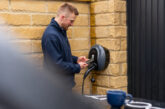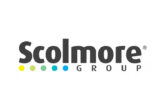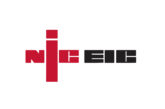
The team at Envirovent advises on the considerations professionals need to make when sourcing appropriate ventilation equipment for the application/environment in question.
There have been significant recent changes to building methods, regulations and best practice compliance, in particular relating to ventilation with the uplifts to Approved Document F in England and Wales back in 2022 and the Domestic Technical Handbook for Scotland in 2023.
These uplifts were part of the Future Homes and Building Standard, with further updates expected in 2025, ensuring that building methods and standards align with Net Zero and beyond.
Compliant and appropriate solutions
As an electrical professional, when it comes to looking at ventilation which is a controlled service, it’s important to ensure that as well as being compliant, the chosen solution is appropriate and realistic for the property.
This should take into account the type of property, any existing problems, how airtight the property is, whether a ducting route is possible, if there are any overheating, acoustic or pollution conditions, if the property is listed or of historical significance, as well as many other variables. This may rely upon conversations between architects, consultants and others involved within the works.
Approved Document F, Means of Ventilation is used in both England and Wales to provide a minimum standard relating to ventilation within a building. Both have two volumes depending upon if the building is residential or non-residential.
In Scotland, there are technical handbooks that, unlike England and Wales, contain all information in one document. These provide a number of ventilation solutions which are either determined by airflow rates in each wet room, or use either the floor area or number of bedrooms for whole-house solution.
The NHBC also have a set of Technical Standards that offer best practice solutions if working on new homes registered with the NHBC, in similar fashion to those mentioned earlier.
The most common solutions are listed in these documents and include:
Natural Ventilation with Background Ventilators and Intermittent Extract Fans (previously referred to as System 1) takes the form of intermittent extract fans in each wet room that are used during periods of cooking and bathing.
The airflow requirements are significant with a requirement of up to 60 l/s in a kitchen that can lead to increased noise levels, different sizes of fans for different applications to meet the increased airflows and are normally less energy efficient than two- speed fans.
This solution is not suitable for airtight properties and relies upon significant levels of background ventilation such as through-wall or window trickle vents which can be impractical and difficult to retrofit.
MEV or Mechanical Extract Ventilation (previously referred to as System 3) can be another option which is available as either c-MEV or a centralised solution usually in a loft or hallway cupboard that requires a ducting run, or d-MEV which is a de- centralised solution in each wet room.
These units extract at a low constant level out of wet rooms before boosting via a switch or sensor. There is also a small amount of background ventilation required in living spaces when using this ventilation option so this should also be taken into consideration. These are also typically quieter than an intermittent solution and can be more energy efficient.
Mechanical Ventilation with Heat Recovery, commonly known as MVHR (previously System 4) is another option. These are usually centralised and, depending upon the unit size, will require a designated area for these to be stored such as a plant room, utility or roof space with access for filter changes, commissioning of airflows and maintenance.
These units do have a higher initial outlay cost for the customer, and require an extensive ducting system but these often include high grade filters and can provide greatly improved indoor air quality. MVHR units extract from wet rooms but also supply fresh, filtered air into living spaces with an integrated heat cell enabling the ability to recover some of the heat removed from the wet rooms without the added moisture before this heat is added back into the property.
As a result, MVHR units are extremely energy efficient, have a number of features and benefits and can be used when there is the inability to open some or all of the windows in a property due to acoustics, overheating or similar.
Other ventilation options
There are other ventilation solutions including Passive Stack or Positive Input Ventilation (PIV) that although are not explicitly referred to within some or all regulations as those listed, are seen as not exhaustive.
Providing that compliance can be proven, such as via technical certificates or testing, these are also able to be utilised if appropriate for the property.
Part of the uplift to England and Wales in 2022 included additional guidance relating to ventilation in existing properties, specifically consideration to any works that have been undertaken that affect the fabric of the building, including improved glazing and insulation, as quite often the ventilation within the building will no longer be sufficient.
There are other standards such as PAS 2030 and PAS 2035 which relate to energy efficiency measures in buildings and managing the installation process which can be consulted in addition to the regulations mentioned.
Collectively, these documents provide installation and commissioning guidance as well as good practice including limiting the use of flexible ducting, sizing and use of background ventilations, door widths and undercuts to ensure good levels of cross-ventilation.
These regulations and incoming uplifts will continue to ensure that electrical professionals and those within the built environment are able to provide safe and healthy buildings for all.
Get more details about Envirovent’s range of ventilation solutions and services here
Find more industry technical articles here








